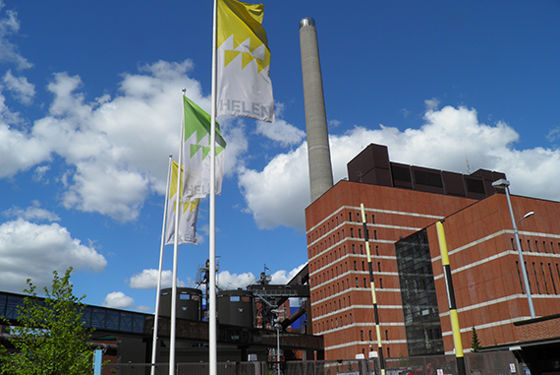More efficient process management with modernization of automation
Nov 30, 2015
Helen Ltd has invested in the future of the Salmisaari power plant in Helsinki. The new automation system is part of the company’s projects to improve energy efficiency, increase usability and reduce emissions. Dismantling and replacing the old system is a challenging project that was taken on by Valmet’s professionals. When completed, the project will increase the life time of the power plants by 20 years.
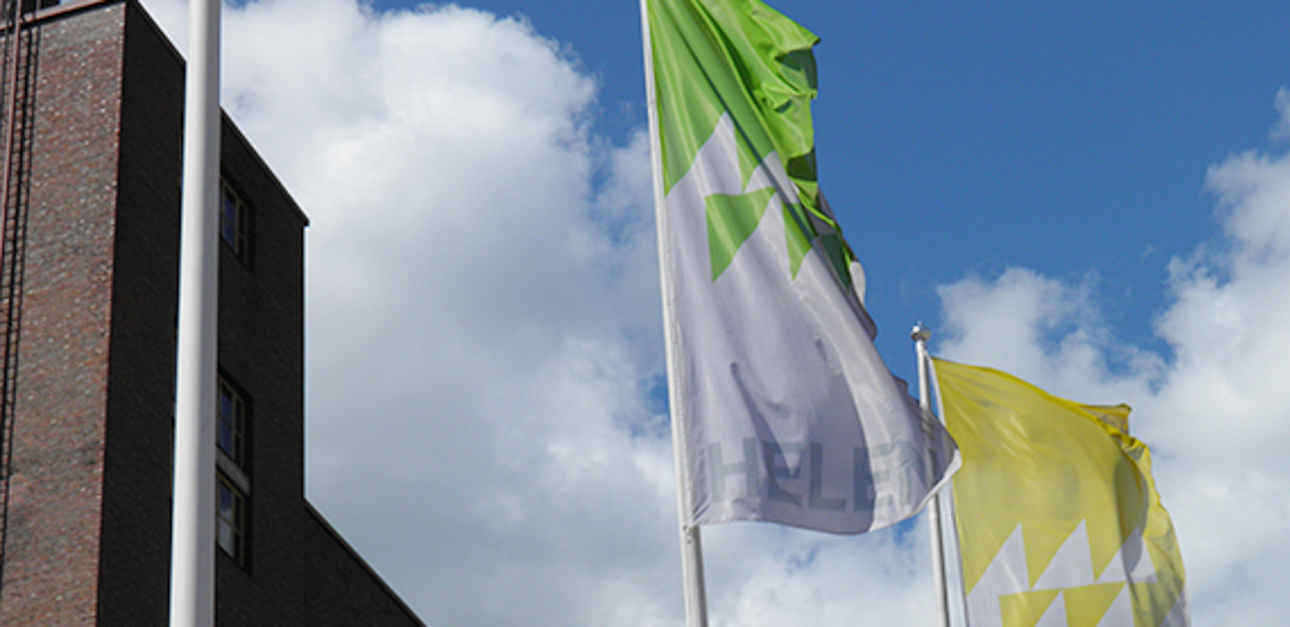
The Salmisaari B power plant produces 300 MW of heat and 170 MW of electricity. In the future, in addition to burning coal, the power plant will increase its use of pellets as fuel, thereby making the power plant more climate friendly. A catalyst supplied by Valmet is currently being built for the power plant, and 5–7% of the coal will be replaced by pellets. The Salmisaari B power plant is a major operator in the capital region, producing approximately 25% of the district heating and 17% of the electricity in consumed Helsinki. Salmisaari also produces most of the district cooling in Helsinki.
The modernization of the automation system and field measuring instruments in the Salmisaari A and B power plants, built in the 1980s, has been a major investment in Finland. Modernization of the B power plant included the adoption of the Valmet DNA automation and safety interlocking systems as well as the modernization of the reporting system. The numerous separate logics were replaced with the automation system, and emission reporting was modernized to conform to current requirements. The contract includes installation, operator training and commissioning. The automatization of Salmisaari B started in 2007 with the adoption of a new process management system. In 2012, both gas turbines at Kellosaari stand-by power plant were modernized and connected to the Valmet DNA system. Modernization of the A power plant will be carried out during 2015.
Best power plants in terms of efficiency
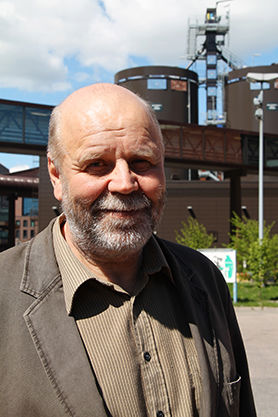 |
|
| Jyrki Itkonen, Power Plant Manager. |
“Helen Oy’s Salmisaari B power plant is highly efficient. It generates electricity as well as district heating and cooling for the Helsinki region. Thanks to this trigeneration of heat, electricity and district cooling, the plant’s net efficiency is over 90%. Power plants that only generate electricity typically only reach a level of 40–45%,” says Jyrki Itkonen, Power Plant Manager.
A profitable power plant is worth investing in to ensure that its availability remains high. The security of supply in the district heating network must be invested in in particular. According to Itkonen, investments must be timed right, and now is the right time for modernization, as the power plants are reaching the end of their first life with regard to their operating hours. The basic design and implementation of automation in the B power plant proceeded on schedule, which is rare in projects of such a large scale. “There is some room for improvement in the testing of the new system. We experienced technical problems in the process during the start-up phase, which is why starting up the production proved to be a challenge both for us and for Valmet. Since its commissioning, the power plant has operated as expected,” states Itkonen.
Itkonen thanks the professionals at Helen and Valmet for their part in the successful completion of the project. “There was a good spirit of cooperation during the project. We also discussed areas for development together, and they will be taken into account in the future.” A management team model developed at Itkonen’s initiative was adopted, along with the automation and electrification projects. The model helped to coordinate several projects and annual maintenance simultaneously. This allowed schedules to be synchronized and safety training, communication and other matters common to the projects to be organized collectively and cost-efficiently. The resulting benefits were so great that this leadership model will now be used in the future to manage all annual maintenance and projects.
Good project management starts with planning
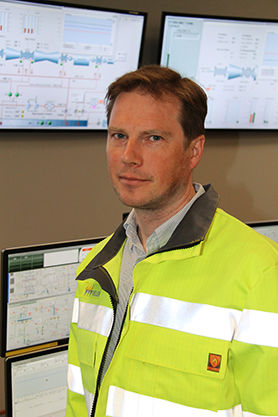 |
|
|
Project Manager Pekka Salimäki.
|
Project Manager Pekka Salimäki from the Engineering unit is in charge of the automation project and acts as the project manager for the entire project. He emphasizes the fact that the project means major investments to the power plant. In addition to the modernization of the automation system in the Salmisaari B power plant, annual maintenance was also carried out and the construction of a pellet plant was commenced.
Obtaining initial data on the old automation system may be very challenging, as the system has been updated over the years. The documentation is not necessarily up to date. Salimäki says: “Valmet made a substantial investment in the project planning, which can be seen in the positive end result. Project management has been systematic, which is essential in modernization projects in particular.”
Salimäki is satisfied with Valmet’s project expertise. From Valmet, Ossi Lampinen acted as the project manager, and although the project took place over a couple of years, no personnel changes were made during the project. The same experts are currently working on replacing the automation system in Salmisaari A.
During the FAT tests (Factory Acceptance Test), many of Helen Ltd’s electrical automation technicians contributed to the tests and training in Tampere. Salimäki believes that this helps to motivate personnel and encourage them to commit, in addition to providing variety to the otherwise static work. A part of the project was tested virtually. Salimäki contemplates the advantages and disadvantages of virtual FAT: “It was interesting to perform tests virtually. Our people worked at Salmisaari and performed virtual testing on the side. The risk with this method is that the actual work situation will draw the employee’s attention away and there will be more interruptions. When the testing is performed by the supplier and given the employee’s full attention, this eliminates any distractions. Of course, one consideration is the matter of costs.”
As the project progressed, Itkonen closely monitored the progression graph for the work. According to the graph, communication went well and contributed to the progress of the project. Itkonen mentions that strong experience was evident in Valmet’s project expertise, and the personnel knew what they were doing.
“Valmet DNA is quite the time machine”
Control Room Operator Hannu Karhu says: “For users, the replacement of a system is a major and challenging issue. We previously used a console system, and now we have the latest technology from Valmet. We received training at the beginning on how to operate the system, and we are constantly learning more through practical work.”
After using the Valmet DNA system for a year, Karhu lists some of its practical benefits: “We all have our favorite pages on which the displays are given in a certain order. When my work shift begins, I open my page and I know exactly where to find whatever information I’m looking for. There is a great deal of historical data available. By analyzing the causes of events, we can investigate failures and learn more from them. Valmet DNA also manages past events, which makes it quite the time machine.”
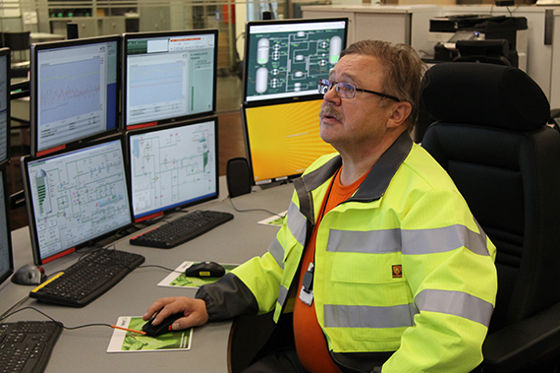
Hannu Karhu
The Industrial Emissions Directive controls the power plant’s operations
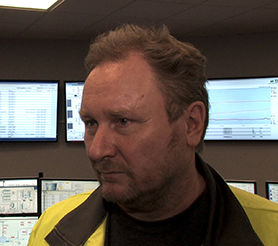 |
|
|
Tom Huovilainen |
According to Technical Operations Manager Tom Huovilainen, the power plant’s aim is to increase the utilization of renewable energy sources at Salmisaari. A pellet plant will support this aim.
Valmet’s new control solutions allow the power plant to optimize boiler operation. The end result is an efficient and environmentally friendly process. The Industrial Emissions Directive, which enters into force in 2016, will set stricter limits for sulfur, nitrogen and particulate emissions from power plants. “The measurement results gathered by the Valmet DNA automation system allow the power plant to manage its emissions and prevent maximum values from being exceeded. By investigating a failure, we will be able to see its causes. If necessary, we can change process operation methods and thereby operate the plant in an optimal way. Furthermore, the reports conveniently provide the information required by the authorities,” says Huovilainen.
Huovilainen emphasizes the importance of the safety interlocking system. “In the previous system, we had to find the values on paper; now we can see them directly on the display. Replacement of the separate logics was a very good thing, as now all the information is available in the same system,” explains he.
The project will continue through a service agreement
In addition to the modernization of the automation system at the Salmisaari power plants, Valmet DNA also controls other processes: two gas turbines, underground coal storage and the operation of the Kellosaari stand-by power plant. All of this is controlled from one control room that was converted into a modern workplace, right down to the ergonomics.
The unified automation system will help to achieve cost savings in connection with spare parts, local support and maintenance, among other things. Helen Ltd and Valmet will continue their cooperation naturally through a service agreement.
More information: Olli Koivumäki,
olli.koivumaki at valmet.com
